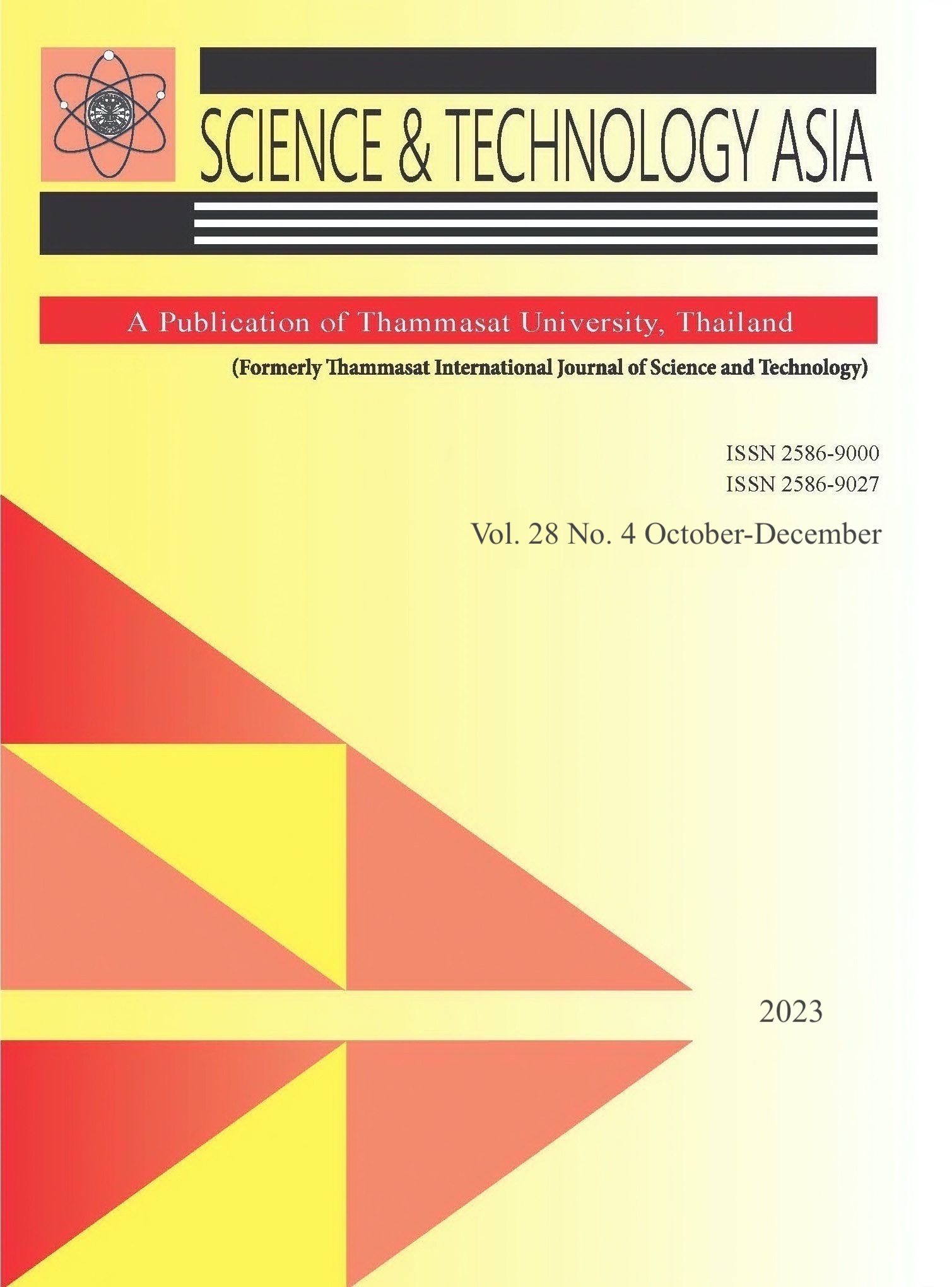Incorporating Decomposition and the Holt-Winters Method into the Whale Optimization Algorithm for Forecasting Monthly Government Revenue in Thailand
Main Article Content
Abstract
This study focuses on the forecasting of government revenue in Thailand across four primary sectors: the Revenue Department, Excise Department, Customs Department, and Other Agencies. Acknowledging the critical role of precise and efficient forecasting in policymaking, we proposed two models: the Whale Optimization Algorithm with Holt-Winters (WOA-HW) and the Whale Optimization Algorithm with Decomposition (WOA-D), comparing their performance with two classical models: Classical Decomposition (Classic-D) and Box-Jenkins. The model performances were evaluated using both a training dataset and a test dataset, with Root Mean Square Error (RMSE), Mean Absolute Error (MAE), and Mean Absolute Percentage Error (MAPE) serving as key metrics. The results demonstrate that the WOA-D model generally outperformed the other models during the training phase, showcasing its significant potential in time series forecasting. During the testing phase, the WOA-HW model exhibited commendable performance across three datasets: the Revenue Department, Excise Department, and Other Agencies. For the Customs Department dataset, the Box-Jenkins model emerged as the top performer, employing a 12 model. This study concludes by emphasizing the effectiveness of these models not only for forecasting government revenue but also for broader applicability in forecasting other time series data.
Article Details

This work is licensed under a Creative Commons Attribution-NonCommercial-NoDerivatives 4.0 International License.
References
Ministry of Finance Operation Center. Ministry of Finance. Available from: https://dataservices.mof.go.th/menu3?id=2&page=&freq=month&mf=10&yf=2565&mt=4&yt=2566&sort=asc&search_text=.
Tax Planning Office. The Excise Department. Available from: https://www.excise.go.th/cs/groups/public/documents/document/dwnt/ndcw/~edisp/uatucm470306.pdf.
Persons W. Indices of business conditions. Review of Economics and Statistics, 1919;1:5-110.
Mbuli N, Mathonsi M, Seitshiro M, Pretorius JHC. Decomposition forecasting methods: A review of applications in power systems. Energy Reports 6, 2020;298-306.
Koirala TP. Government revenue forecasting in Nepal. NRB Economic Review, 2012;24(2):47-60.
Hansen JV, Nelson RD. Neural networks and traditional time series methods: A synergistic combination in state economic forecasts. IEEE Transactions on Neural Networks, 1997;8(4):863-73.
Gardner ES. Exponential smoothing: The state of the art. Journal of forecasting, 1985;4(1):1-28.
Brown RG. Statistical forecasting for inventory control. McGraw/Hill; 1959.
Holt CC. Forecasting seasonals and trends by exponentially weighted moving averages. Report to the Office of Naval Research (ONR 52);1957.
Holt CC. Forecasting seasonals and trends by exponentially weighted moving averages. International Journal of Forecasting, 2004;20(1):5-10.
Winters PR. Forecasting Sales by Exponentially Weighted Moving Averages. Management Science, 1960;6(3):324-42.
Frank HA. Municipal revenue forecasting with time series models: A Florida case study. The American review of public
administration, 1990;20(1):45-59.
Gianakis GA, Frank HA. Implementing Time Series Forecasting Models: Considerations for Local Governments. State and Local Government Review, 1993;25(2):130-44.
Williams DW. Local government revenue forecasting methods: Competition and comparison. Journal of Public Budgeting, 2016;28(4):488-526.
Ortiz RRL. The accuracy rate of Holt-Winters model with particle swarm optimization in forecasting exchange rates. Journal of Computers, 2016;11(3):216-24.
Tresnani HW, Sihabuddin A, Mustofa K. Parameter optimization in grey Holt-Winter exponential smoothing using golden section. Journal of Mathematics and Natural Science, 2018;25(3):312-25.
Hani’ah M, Putri IK, Ririd ARTH. Parameter optimization of Holt-Winters exponential smoothing using golden section method for predicting indonesian car sales. In Proceedings of IEIT 2021: 1st International Conference on Electrical and Information Technology; 2021. pp. 21-6.
Jiang W, Wu X, Gong Y, Yu W, Zhong X. Holt–Winters smoothing enhanced by fruit fly optimization algorithm to forecast monthly electricity consumption. Energy, 2020;193:116779.
Hani’ah M, Putri IK, Ririd ARTH. Genetic algorithms for Holt Winter exponential smoothing parameter optimization in indonesian car sales forecasting. In Proceedings of the 2022 Annual Technology, Applied Science and Engineering Conference (ATASEC 2022). Atlantis Press; 2022. pp. 159-71.
Zhou W, Tao H, Jiang H. Application of a novel optimized fractional grey Holt-Winters model in energy forecasting. Sustainability, 2022;14(3118):1-18.
Mauricio CC, Ostia CF. Cuckoo search algorithm optimization of Holt-Winter Method for distribution transformer load forecasting. In Proceeding of the 2023 9th International Conference on Control, Automation and Robotics (ICCAR), Beijing, China; 2023. pp. 36-42.
Liu L, Wu L. Predicting housing prices in China based on modified Holt’s exponential smoothing incorporating whale optimization algorithm. Socio- Economic Planning Sciences, 2020;72:1-8.
Mirjalili S, Lewis A. The whale optimization algorithm. Advances in Engineering Software, 2016;95:51-67.
Nadimi‑Shahraki MH, Zamani H, Varzaneh ZA, Mirjalili S. A systematic review of the whale optimization algorithm: theoretical
foundation, improvements, and hybridizations. Archives of Computational Methods in Engineering, 2023;1-47.
Google Colab. Overview of Colaboratory Features. Available form: https://colab.research.google.com/notebooks/intro.ipynb


